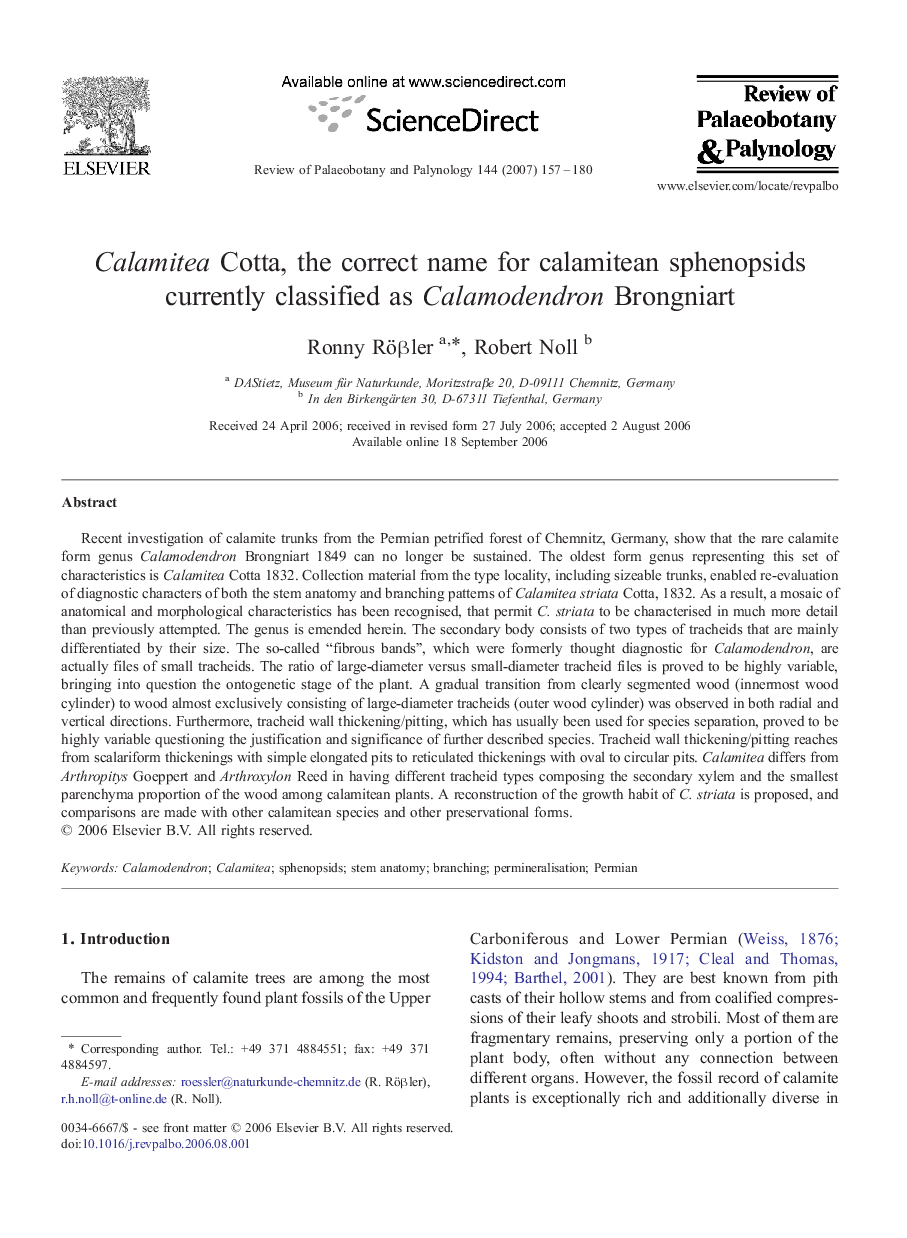| کد مقاله | کد نشریه | سال انتشار | مقاله انگلیسی | نسخه تمام متن |
|---|---|---|---|---|
| 4751114 | 1642574 | 2007 | 24 صفحه PDF | دانلود رایگان |
عنوان انگلیسی مقاله ISI
Calamitea Cotta, the correct name for calamitean sphenopsids currently classified as Calamodendron Brongniart
دانلود مقاله + سفارش ترجمه
دانلود مقاله ISI انگلیسی
رایگان برای ایرانیان
موضوعات مرتبط
مهندسی و علوم پایه
علوم زمین و سیارات
فسیل شناسی
پیش نمایش صفحه اول مقاله

چکیده انگلیسی
Recent investigation of calamite trunks from the Permian petrified forest of Chemnitz, Germany, show that the rare calamite form genus Calamodendron Brongniart 1849 can no longer be sustained. The oldest form genus representing this set of characteristics is Calamitea Cotta 1832. Collection material from the type locality, including sizeable trunks, enabled re-evaluation of diagnostic characters of both the stem anatomy and branching patterns of Calamitea striata Cotta, 1832. As a result, a mosaic of anatomical and morphological characteristics has been recognised, that permit C. striata to be characterised in much more detail than previously attempted. The genus is emended herein. The secondary body consists of two types of tracheids that are mainly differentiated by their size. The so-called “fibrous bands”, which were formerly thought diagnostic for Calamodendron, are actually files of small tracheids. The ratio of large-diameter versus small-diameter tracheid files is proved to be highly variable, bringing into question the ontogenetic stage of the plant. A gradual transition from clearly segmented wood (innermost wood cylinder) to wood almost exclusively consisting of large-diameter tracheids (outer wood cylinder) was observed in both radial and vertical directions. Furthermore, tracheid wall thickening/pitting, which has usually been used for species separation, proved to be highly variable questioning the justification and significance of further described species. Tracheid wall thickening/pitting reaches from scalariform thickenings with simple elongated pits to reticulated thickenings with oval to circular pits. Calamitea differs from Arthropitys Goeppert and Arthroxylon Reed in having different tracheid types composing the secondary xylem and the smallest parenchyma proportion of the wood among calamitean plants. A reconstruction of the growth habit of C. striata is proposed, and comparisons are made with other calamitean species and other preservational forms.
ناشر
Database: Elsevier - ScienceDirect (ساینس دایرکت)
Journal: Review of Palaeobotany and Palynology - Volume 144, Issues 3â4, May 2007, Pages 157-180
Journal: Review of Palaeobotany and Palynology - Volume 144, Issues 3â4, May 2007, Pages 157-180
نویسندگان
Ronny Röβler, Robert Noll,